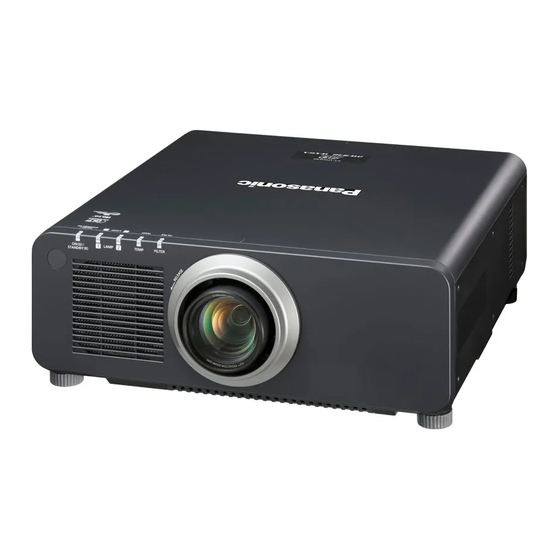Table of Contents
Advertisement
Quick Links
Thank you for purchasing this Panasonic product.
■ The Operating Instructions correspond to the firmware's main version 3.00 and higher.
■ This manual is common to all the models regardless of suffixes of the Model No.
z W : White model, the standard zoom lens supplied
K : Black model, the standard zoom lens supplied
■ Before operating this product, please read the instructions carefully and save this manual
for future use.
■ Before using your projector, be sure to read "Read this first!" ( x pages 2 to 9).
Operating Instructions
DLP
Projector
TM
Model No.
LW : White model, the lens sold separately
LK : Black model, the lens sold separately
Functional Manual
Commercial Use
PT-DZ870E
PT-DW830E
PT-DX100E
ENGLISH
TQBJ0528-3
Advertisement
Table of Contents












Need help?
Do you have a question about the PT-DW830E and is the answer not in the manual?
Questions and answers